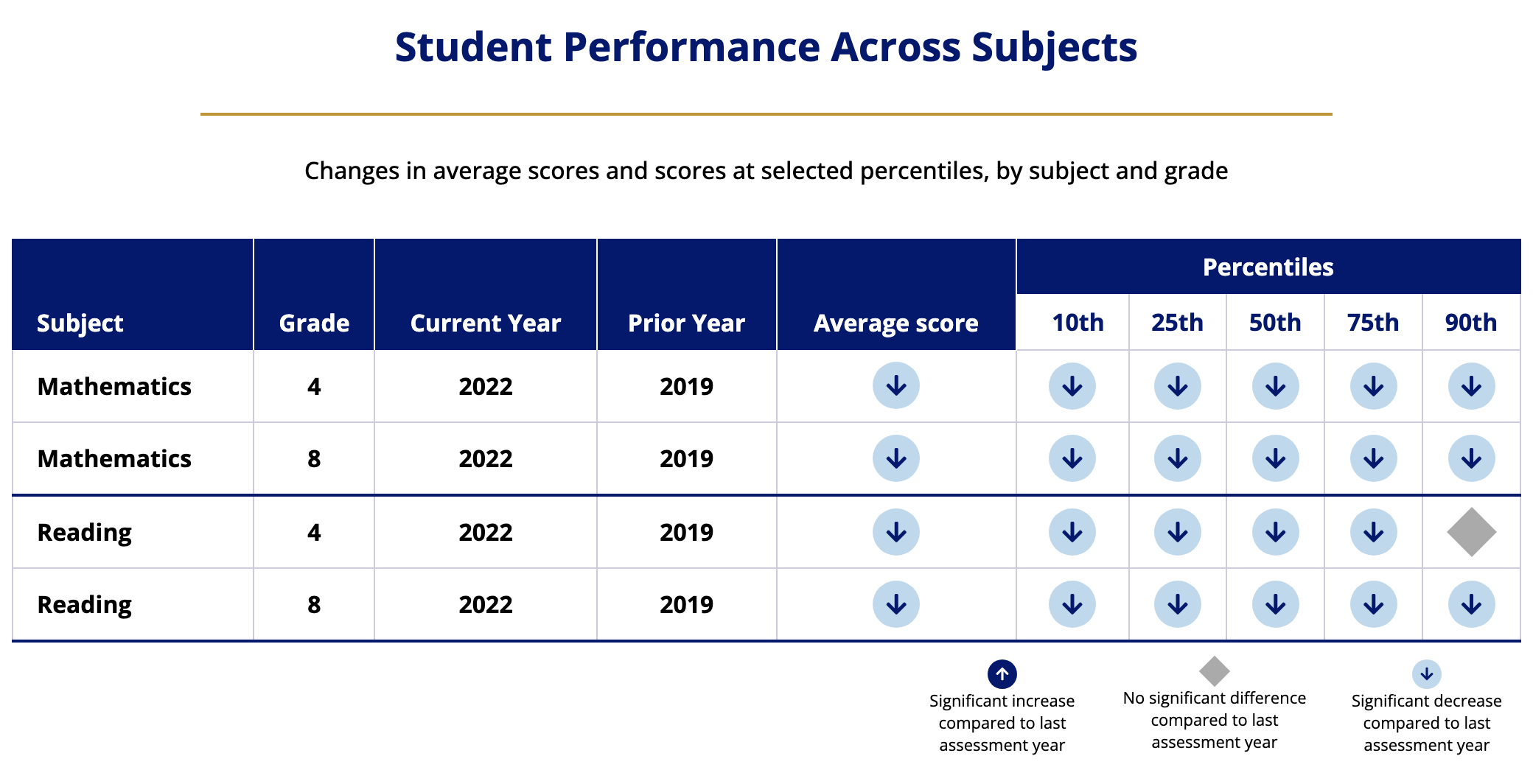New National Assessment of Educational Progress data released early Monday showed sharp declines in American students’ reading and math scores between 2019 and 2022, providing more evidence of the costs of prolonged school closures.

Kevin Mahnken summarized the broad test score declines writing for The 74 Million:
Eighth-grade math scores…fell by a jarring eight points since the test was last administered in 2019, while fourth-grade scores dropped by five points; both are the largest math declines ever recorded on the test. In reading, both fourth- and eighth-grade scores fell by three points, leaving them statistically unchanged since 1992, when NAEP was first rolled out.
The NAEP scores reveal a sharp increase in the percentage of students scoring “below basic” in reading and math across the country:
In mathematics, 25 percent of fourth-graders were below the NAEP Basic level in 2022 (an increase from 19 percent in 2019) and 38 percent of eighth-graders were below NAEP Basic (an increase from 31 percent in 2019). In reading, the percentage of fourth-graders below the NAEP Basic level increased from 34 percent in 2019 to 37 percent in 2022, and the percentage of eighth-graders below NAEP Basic increased from 27 percent in 2019 to 30 percent in 2022.
In other words, the percentage of children who could not perform basic skills grew after two years of school closures during the pandemic. These results confirm our worst fears that schooling disruptions would cause significant harm for children who were at-risk of falling behind before the pandemic.
Professor Emily Oster analyzed the broad new NAEP data and found that “[t]he general patterns are that the losses are big, they’re much bigger in math than in reading, and they’re much bigger in more vulnerable kids. Those seem like things that are very consistent with every other piece of information that we’ve seen in post-pandemic testing.” Oyster’s previous research of state-level testing data found that school districts with more in-person learning in the pandemic had lower declines in passing rates than districts with more remote instruction.
Nationally, the test scores of students attending large city school districts revealed that 47 percent of students scored “below basic” on 4th grade reading and 8th grade math tests. More than one in three students scored “below basic” on 4th grade math and 8th grade reading tests.
For example, in Baltimore City, where public schools were closed for more than a year during the pandemic, the percentage of students’ scoring below basic in 4th grade reading and math tests increased to 70 percent and 66 percent in 2022. The new NAEP data corroborate my concerns that more than half of the students in Baltimore City’s public schools are failing in core subjects despite the district receiving more than $17,000 in per-student revenue.
While researchers will analyze the new NAEP data to identify trends and the likely link between pandemic school closures and test score declines, policymakers must turn their attention to remediating learning losses. As of June, states had spent only $54 billion of the $184 billion in Elementary and Secondary School Emergency Relief funds provided by Congress during the pandemic. $130 billion remained available.
State education agencies and local school districts should use these funds immediately to provide access to tutoring and improve student’s learning opportunities to begin to reverse the national decline in students’ academic achievement.

